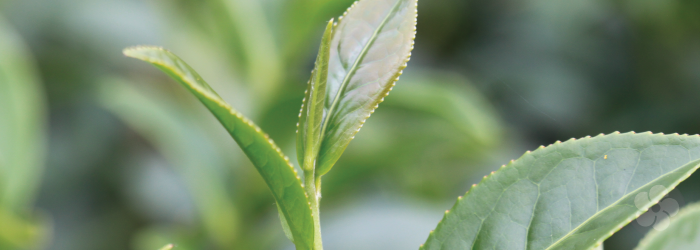What Makes Tea Bitter?

Most tea drinkers expect at least a hint of bitterness in their cup. While not all teas are prone to bitterness, it is a common component of tea flavor, especially in mass produced teas. There are many ways to mitigate the bitter taste of tea, like lowering water temperature, shortening the brewing time, or simply adding milk and sugar. But what creates the natural bitter flavor in tea leaves, and why are some teas more bitter than others?
Methylxanthines
The primary source of bitter flavors in the tea leaf are methylxanthines, a category of molecules that includes the natural stimulants in tea, like caffeine and theobromine. It is thought that these compounds act as a natural pest repellent in the growing tea plant.
This hypothesis correlates with the seasonal progression of tea flavor - early spring harvests, plucked while the weather is still cool, are generally sweeter. As the weather warms, and pest populations grow in the summer months, the mature leaves of the tea plant arm themselves with bitter flavors to deter attacks. At low elevations or latitudes near the equator, where the weather stays warm year-round, bitter flavors are even more common.
During the brewing process, caffeine is one of the first compounds to be released from the tea leaves, and the longer the brew, the more caffeine will end up in your cup. Thus, a shorter brew results in a sweeter tea. This effect is most obvious with chopped leaves or fannings, like those found in mass-produced tea bags. With such small pieces, the surface area of the leaf is greater, and compounds like caffeine are extracted even more quickly, resulting in more bitterness.
Polyphenols
Many sources on this topic cite the healthy polyphenols in tea as a source of bitterness. But in fact, phenolic compounds are more commonly associated with astringency than a truly bitter flavor. Higher concentrations in green tea have been associated with overall intensity of flavor, as well as astringency and bitterness, but studies on black tea show that the common polyphenols theaflavins and thearubigins only impact astringency.
Again, the brewing method can make a big difference in how these compounds taste in your cup. With higher temperatures, some extremely astringent and bitter polyphenols are extracted much more quickly, while a long brew is more likely to break down "highly polymerized" thearubigins, and give the tea a flavor like stewed vegetables.
Avoiding Bitterness
Ironically, these sources of bitterness and astringency also produce many of the beneficial effects in tea. If your goal in a cup of tea is to maximize caffeine or polyphenol content, a bitter cup may be just the thing you’re looking for. Certainly, for most seasoned tea drinkers, bitterness is nothing to cringe from. But for the best overall taste, bitterness and astringency must be balanced with natural carbohydrates and volatile flavor compounds in the leaf, whether through slow growth in the plant or careful control in the brewing process.
Sign up for our newsletter to get blog updates in your inbox!





Comments on this post (0)